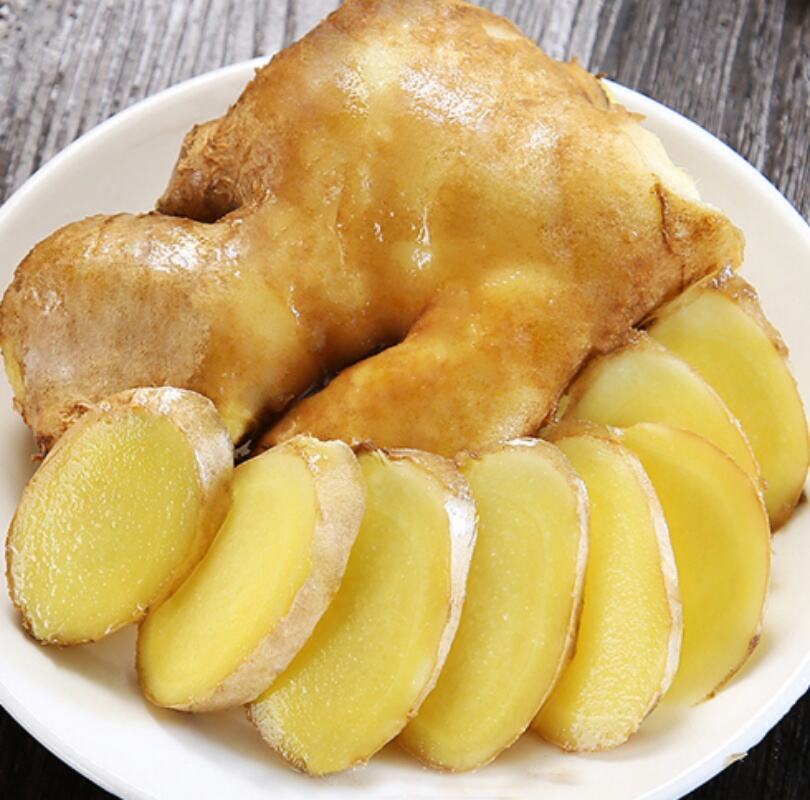Maximizing Shelf Life of Export-Quality Ginger: A Comprehensive Guide
The international trade of fresh ginger presents unique challenges in ginger export logistics, requiring careful attention to preservation techniques and handling procedures. As global demand for this versatile root continues to rise, exporters must implement sophisticated strategies to maintain product quality during long-distance transportation. This comprehensive guide explores proven methods to extend ginger's shelf life throughout the export journey, ensuring it reaches international markets in premium condition.
Pre-Export Processing and Quality Control
Harvest Selection and Initial Processing
Success in ginger export logistics begins at harvest. Selecting mature, disease-free rhizomes is crucial for extended shelf life. The ideal harvesting time occurs when the leaves begin to yellow and dry, typically 8-10 months after planting. Immediately after harvest, ginger should undergo careful cleaning to remove soil residues while avoiding damage to the skin, as breaks in the surface can lead to rapid deterioration.
Professional grading follows cleaning, where rhizomes are sorted based on size, shape, and quality. Export-grade ginger must meet strict criteria: firm texture, unblemished skin, and uniform color. Any pieces showing signs of sprouting, soft spots, or damage should be removed to prevent affecting the entire shipment during transit.
Treatment and Curing Processes
Proper curing is a critical step in ginger export logistics that significantly impacts shelf life. The process involves storing freshly harvested ginger in a well-ventilated environment at 25-30°C with relative humidity between 70-75% for 5-7 days. This allows the skin to toughen and minor cuts to heal, creating a natural barrier against decay.
Some exporters employ approved post-harvest treatments such as hot water dips or approved fungicides to prevent spoilage. These treatments must comply with international food safety regulations and importing country requirements. Documentation of all treatments becomes part of the essential export paperwork.

Storage and Temperature Management
Optimal Storage Conditions
Maintaining consistent temperature and humidity levels is paramount in ginger export logistics. The ideal storage temperature range falls between 12-14°C, while relative humidity should be maintained at 85-90%. These conditions help prevent both dehydration and fungal growth, two primary causes of quality deterioration during export.
Storage facilities must be equipped with precision climate control systems and monitoring devices. Regular checks ensure conditions remain stable, and any deviations can be quickly addressed. Modern facilities often employ automated systems that provide real-time environmental data and alerts.
Packaging Innovation for Extended Shelf Life
Advanced packaging solutions play a vital role in successful ginger export logistics. Modified Atmosphere Packaging (MAP) technology helps maintain optimal gas composition around the product, slowing respiration rates and extending shelf life. Specialized perforated films allow controlled gas exchange while preventing moisture accumulation.
Proper packaging configuration includes moisture-absorbent materials and ventilation features. Each box should contain an appropriate amount of product to prevent compression damage, typically not exceeding 10kg per container. Sturdy outer packaging protects against physical damage during handling and transit.
Transportation and Supply Chain Management
Cold Chain Integrity
Maintaining an unbroken cold chain is essential in ginger export logistics. From packing house to final destination, temperature monitoring devices track and record environmental conditions. Any breaks in the cold chain can significantly reduce shelf life and product quality.
Strategic routing and carrier selection ensure minimal transit time and optimal handling. Specialized reefer containers with precise temperature control capabilities are preferred for ocean freight, while air shipments require coordination with airlines offering temperature-controlled cargo services.
Documentation and Compliance
Proper documentation supports efficient ginger export logistics and helps maintain product quality. Temperature logs, treatment records, and handling procedures must be meticulously maintained. These records not only satisfy regulatory requirements but also help identify any points in the supply chain where improvements might be needed.
Compliance with international standards and importing country regulations is non-negotiable. This includes adherence to Maximum Residue Limits (MRLs), phytosanitary requirements, and food safety certifications. Regular audits and updates to procedures ensure continued compliance.
Quality Monitoring and Shelf Life Extension
Advanced Quality Assessment Methods
Regular quality assessments throughout the ginger export logistics chain help identify potential issues before they become problems. Non-destructive testing methods, including visual inspection and firmness testing, provide valuable data without compromising product integrity.
Implementation of quality monitoring technology, such as ethylene sensors and ripeness indicators, helps optimize handling procedures. These tools provide objective data for decision-making regarding storage conditions and shipping timing.
Innovative Preservation Techniques
Recent advances in preservation technology offer new options for extending ginger shelf life. Natural antimicrobial treatments and biopreservation methods show promise in maintaining quality without chemical residues. Research continues into novel coating materials and treatment methods that could further extend viable export distances.
Investment in research and development of preservation techniques remains crucial for improving ginger export logistics. Collaboration between exporters, research institutions, and technology providers drives innovation in this field.
Frequently Asked Questions
What is the optimal storage temperature for export ginger?
The ideal storage temperature for export ginger ranges between 12-14°C (53.6-57.2°F), with relative humidity maintained at 85-90%. These conditions help prevent sprouting while minimizing moisture loss and decay.
How long can fresh ginger maintain quality during export?
Under optimal storage and transportation conditions, properly processed and packaged fresh ginger can maintain export quality for 8-12 weeks. This duration depends on factors including initial product quality, handling procedures, and maintenance of the cold chain.
What are the key factors affecting ginger shelf life during export?
The primary factors impacting ginger shelf life in export logistics include temperature control, relative humidity, packaging quality, handling procedures, and initial product condition. Maintaining consistent environmental conditions and minimizing physical damage are crucial for maximum shelf life.
Which packaging materials are best for ginger export?
The most effective packaging for ginger export combines ventilated cartons with Modified Atmosphere Packaging (MAP) materials. These should include moisture control features and adequate protection against physical damage while allowing necessary gas exchange.

